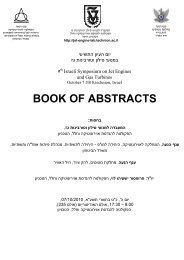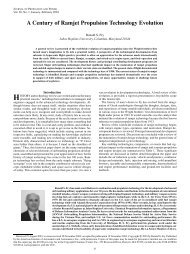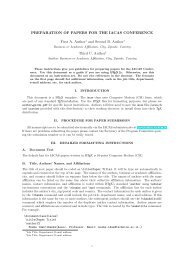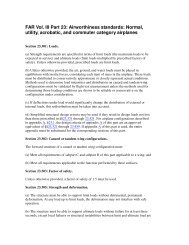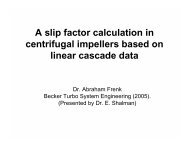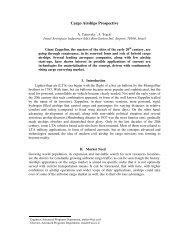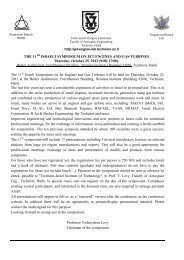Using Hebrew LaTeX and gvim to produce DVI - Faculty of ...
Using Hebrew LaTeX and gvim to produce DVI - Faculty of ...
Using Hebrew LaTeX and gvim to produce DVI - Faculty of ...
You also want an ePaper? Increase the reach of your titles
YUMPU automatically turns print PDFs into web optimized ePapers that Google loves.
Chapter 1<br />
Introduction<br />
1.1 Background <strong>and</strong> acknowledgments<br />
This document describes a packaging <strong>of</strong> TEX related programs <strong>and</strong> resources, adjusted for<br />
using LATEX <strong>to</strong> <strong>produce</strong> Postscript <strong>and</strong> PDF documents, with full <strong>Hebrew</strong> capabilities1 .<br />
This project was supported by funds from the <strong>Faculty</strong> <strong>of</strong> Electrical Engineering <strong>and</strong> the<br />
“Information Technologies for Technion Teaching” (ITTT) Project, Technion — Israel Institute<br />
<strong>of</strong> Technology.<br />
Concept:<br />
Tomer Kol, Adam Shwartz, Electrical Engineering Department, Technion.<br />
Design <strong>and</strong> implementation:<br />
Tomer Kol.<br />
Support:(NOTE: support will start once released).<br />
Irena Abramovitch, Computer Center, Technion.<br />
1.2 General description<br />
For the basic use, the user simply crates an ordinary LATEX file, adding a few packages, <strong>and</strong><br />
the result can be transformed in<strong>to</strong> postscript or PDF files.<br />
The text edi<strong>to</strong>r GVIM is used <strong>to</strong> created the text file *.tex, <strong>and</strong> serves as an environment2 <strong>to</strong> call other programs using pull-down menus or key sequences. There are several supported<br />
features such as, for example, Make <strong>DVI</strong>, which calls LATEX, makeindex, BibTeX <strong>and</strong> <strong>Hebrew</strong><br />
support scripts enough times <strong>to</strong> resolve references etc. A main advantage <strong>of</strong> GVIM, beside<br />
being a powerful edi<strong>to</strong>r, is that it exists with an identical interface both for Unix <strong>and</strong> PCs<br />
running MS windows (95/NT).<br />
The tex file is then converted <strong>to</strong> <strong>DVI</strong> using elatex (LATEX based on ε-TEX, which supports<br />
<strong>Hebrew</strong>). The <strong>DVI</strong> file can have hyperlinks usable when viewed with a <strong>DVI</strong> viewer, such as<br />
xdvi, or tags, that after creating a postscript file (using dvips) <strong>and</strong> then a PDF document (using<br />
Adobe Acrobat Distiller or the free ps2pdf utility) will result in an hyperlinked PDF document.<br />
DRAFT<br />
1The current “<strong>of</strong>ficial” version <strong>of</strong> <strong>Hebrew</strong> support for LATEX was created by Boris Lavva<br />
2All the normal comm<strong>and</strong> line comm<strong>and</strong>s are available (VIM just serves as a front end), so you can use them<br />
from a comm<strong>and</strong> line or from other edi<strong>to</strong>rs such as emacs.<br />
3






